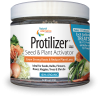Houseplants provide bursts of greenery throughout your home and even purify indoor air. While many houseplants require direct or bright indirect light to thrive, a few hardy plants can survive in the shadier corners of your home. While all plants need some light to survive, these plants get by in lower light and may even be scorched by direct sun. For the plant lover looking to breathe life into the darker corners of your home or apartment, these plants can save the day.
When watering your houseplants, be sure to water thoroughly and evenly, stopping when water begins to flow out of container drainage holes. When watering plants in containers without drainage holes, be sure to soak soil just enough, without allowing water to pool in the bottom of the container. Use Natural Alternative® 5-5-5 All-Purpose Plant Food for balanced houseplant feeding to ensure best results.
ZZ Plant (Zamioculas)
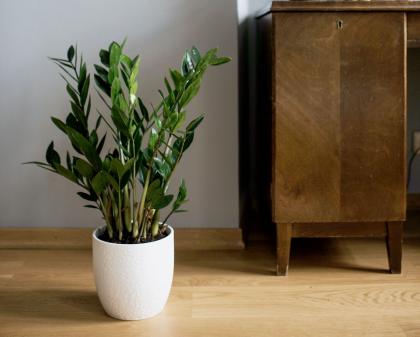
Native Areas: Eastern Africa
Growth Rate: Slow
Feeding: Monthly, spring through fall
Watering: Only when soil is dry throughout
With waxy, evenly-toned leaves, the ZZ plant grows in shoots from the soil. New leaves may appear lighter green and darken as they mature. New shoots appear from the soil as a pale reddish gray, and have a modest growth rate. This plant is very tolerant of neglectful caretakers and is incredibly hardy. The ZZ plant enjoys humid environments but will perform in typical indoor humidity as long as it is not placed near a reoccurring draft (air vents, etc.). Propagation of the ZZ plant is possible with leaf cuttings; however, the slow growth of this plant makes frequent propagation unlikely. The ZZ plant is mildly toxic to humans, cats, and dogs if ingested.
Snake Plant (Dracaena trifasciata)
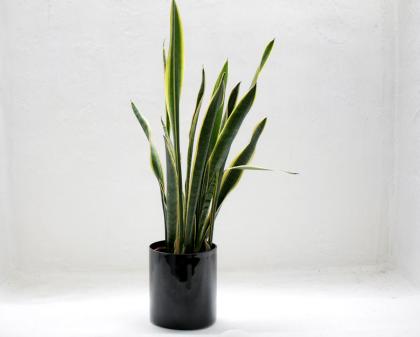
Native Areas: Western Africa
Growth Rate: Slow
Feeding: Once in spring and once in summer
Watering: Only when soil is dry throughout
Featuring several varieties of variegated green and yellow leaves, the snake plant (lovingly nicknamed "mother-in-law's tongue") is distinguished by its uniquely vertical, flat tongue-looking leaves. Darker colored varieties perform better in the shadiest conditions, but all snake plants will survive in low light. Be wary of overwatering the snake plant, especially if it is planted in a container without drainage holes. Frequent watering can lead to root rot, and the snake plant likes its soil to dry completely before receiving its next watering. Depending on humidity and light levels, watering can be as infrequent as every other month. Propagation of the snake plant is possible by placing leaf cuttings in shallow water until roots occur. Propagation is a very slow process that performs better in bright, indirect light. The snake plant is mildly toxic to humans, cats, and dogs if ingested.
Spider Plant (Chlorophytum comosum)
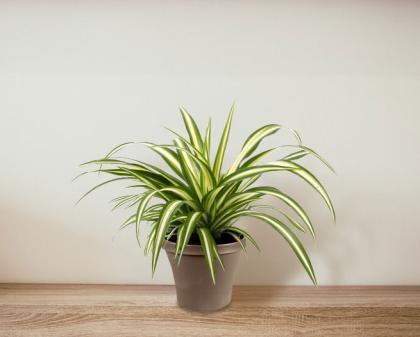
Native Areas: Southern Africa
Growth Rate: Varied, with moderate growth slowing once mature
Feeding: Once in spring and once in summer
Watering: Weekly to every other week, after top two inches of soil dry out
The spider plant features long, curved, leg-like leaves. Some varieties feature long, white variegated stripes, while others appear uniformly green. The spider plant produces runners—spindly, thin stems that appear different from dominant foliage. These runners can flower under the right conditions and produce spider plant "babies." These juvenile plants grow on the runner and can be numerous. Attached to the mother plant, they will eventually develop air root nodes below their own miniature foliage. When roots emerge, the juvenile plant can be cut from the mother runner with a sharp blade and propagated. At this stage, propagation in shallow water is possible, while carefully monitoring for root rot. Transfer to soil when roots have further developed. Apply Protilizer® Seed & Plant Activator to fresh soil to prevent transplant shock. The spider plant is non-toxic to humans and pets alike.
Pothos (Epipremnum aureum)
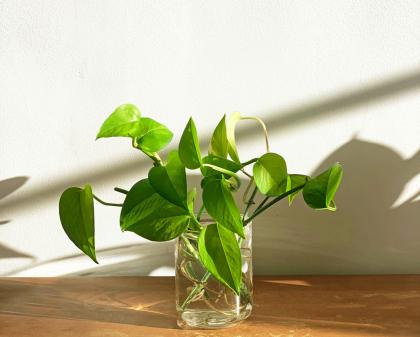
Native Areas: French Polynesia
Growth Rate: Fast, with moderate growth in low light
Feeding: Monthly, spring through fall
Watering: Weekly to every other week, after top two inches of soil dry out
The pothos plant, also known as devil's ivy, comes in a variety of uniform and variegated leaf patterns, sometimes featuring flushes of yellow or white. If properly cared for, the pothos plant can grow rapidly as a vine, with several feet of growth per season. Expect moderately slower growth in low light conditions. Pothos plants can be grown in soil or water, with water-grown pothos offering less watering maintenance. Pothos grown in water will have difficulty adapting to a soil-based environment, after growing in water for a substantial amount of time. The pothos plant responds well to propagation; read how to propagate for additional plants here. The pothos plant is toxic to cats and dogs if ingested.
Chinese Evergreen (Aglaonema)
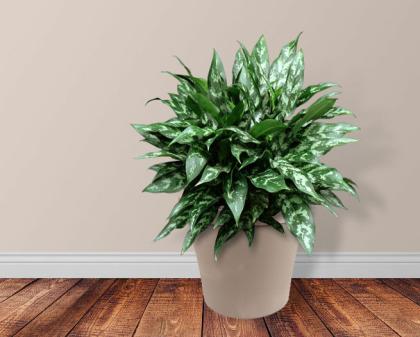
Native Areas: Southeastern Asia, Oceania
Growth Rate: Slow
Feeding: Once in spring and once in summer
Watering: Weekly to every other week, after top two inches of soil dry out
Featuring patterned and speckled leaves, the Chinese evergreen plant resembles a peace lily in shape. An incredibly durable plant, the Chinese evergreen can flower if in the proper conditions, but may remain as only greenery in low light. The Chinese evergreen can survive on fluorescent lighting, making it ideal for a windowless office space. Darker varieties of this plant do particularly well in low light. The Chinese evergreen thrives in warmth, so keeping it away from air conditioning vents and drafty windows will promote growth. Propagation with stem cuttings is possible. Mature plants can, however, be split by the root system, much like a hosta. The Chinese evergreen is mildly toxic if ingested by humans or animals.
Heartleaf Philodendron (Philodendron hederaceum)
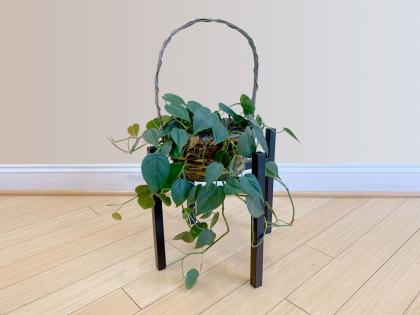
Native Areas: Central America
Growth Rate: Fast
Feeding: Monthly, spring through fall
Watering: Weekly to every other week, after top two inches of soil dry out
As the name implies, this plant features heart-shaped, dark green leaves. This variety of philodendron will grow as a vine, with new growth featuring a temporary red coloration. To the casual observer, heartleaf philodendron appears similar to the pothos plant, although philodendron often features smaller, more uniformly-colored leaves. If left to grow naturally, the philodendron can develop long, lanky vines, ideal for spilling off a bookshelf or cabinet. If a more compact appearance is desired, regularly pinch off longer growth directly after a leaf nodule; this will encourage new growth from soil, resulting in a bushier appearance. The heartleaf philodendron responds well to propagation; read how to propagate for additional plants here. The heartleaf philodendron is mildly toxic to cats and dogs if ingested.
Protilizer® Seed & Plant Activator
Give plants in low light conditions the extra boost they need to develop a strong root system with Natural Alternative® Protilizer® Seed & Plant Activator. Protilizer® protects the root system of your plant by introducing beneficial microbes. These microbes help with water intake and fight off fungal attacks which can devastate plant health. Protilizer® is perfect to use during the propagation of houseplants, as it assists in faster root development and helps prevent transplant shock.


